#filmmaking community
Photo
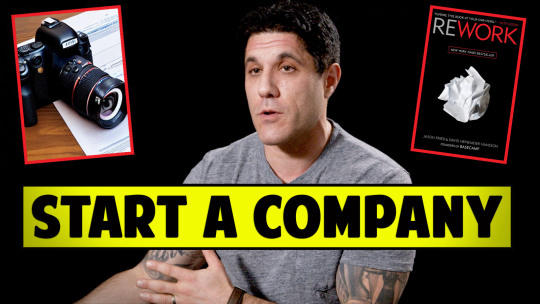
First Steps To Starting A Production Company - Rory Karpf via FilmCourage.com.
#film#producer#film producer#production company#filmmakers on tumblr#cinema#filmmaking community#sports#espn#nascar#documentary film#making a movie#career#videos#tumblr film#sports movie#football
0 notes
Text
5 Tips for Creating Intimidating Antagonists
Antagonists, whether people, the world, an object, or something else are integral to giving your story stakes and enough conflict to challenge your character enough to change them. Today I’m just going to focus on people antagonists because they are the easiest to do this with!
1. Your antagonist is still a character
While sure, antagonists exist in the story to combat your MC and make their lives and quest difficult, they are still characters in the story—they are still people in the world.
Antagonists lacking in this humanity may land flat or uninteresting, and it’s more likely they’ll fall into trope territory.
You should treat your antagonists like any other character. They should have goals, objectives, flaws, backstories, etc. (check out my character creation stuff here). They may even go through their own character arc, even if that doesn’t necessarily lead them to the ‘good’ side.
Really effective antagonists are human enough for us to see ourselves in them—in another universe, we could even be them.
2. They’re… antagonistic
There’s two types of antagonist. Type A and Type B. Type A antagonist’s have a goal that is opposite the MC’s. Type B’s goal is the same as the MC’s, but their objectives contradict each other.
For example, in Type A, your MC wants to win the contest, your antagonist wants them to lose.
In Type B, your MC wants to win the contest, and your antagonist wants to win the same contest. They can’t both win, so the way they get to their goal goes against each other.
A is where you get your Draco Malfoy’s, other school bullies, or President Snow’s (they don’t necessarily want what the MC does, they just don’t want them to have it.)
B is where you get the other Hunger Games contestants, or any adventure movie where the villain wants the secret treasure that the MCs are also hunting down. They want the same thing.
3. They have well-formed motivations
While we as the writers know that your antagonist was conceptualized to get in the way of the MC, they don’t know that. To them, they exist separate from the MC, and have their own reasons for doing what they do.
In Type A antagonists, whatever the MC wants would be bad for them in some way—so they can’t let them have it. For example, your MC wants to destroy Amazon, Jeff Bezos wants them not to do that. Why not? He wants to continue making money. To him, the MC getting what they want would take away something he has.
Other motivations could be: MC’s success would take away an opportunity they want, lose them power or fame or money or love, it could reveal something harmful about them—harming their reputation. It could even, in some cases, cause them physical harm.
This doesn’t necessarily have to be true, but the antagonist has to believe it’s true. Such as, if MC wins the competition, my wife will leave me for them. Maybe she absolutely wouldn’t, but your antagonist isn’t going to take that chance anyway.
In Type B antagonists, they want the same thing as the MC. In this case, their motivations could be literally anything. They want to win the competition to have enough money to save their family farm, or to prove to their family that they can succeed at something, or to bring them fame so that they won’t die a ‘nobody’.
They have a motivation separate from the MC, but that pesky protagonist keeps getting in their way.
4. They have power over the MC
Antagonists that aren’t able to combat the MC very well aren’t very interesting. Their job is to set the MC back, so they should be able to impact their journey and lives. They need some sort of advantage, privilege, or power over the MC.
President Snow has armies and the force of his system to squash Katniss. She’s able to survive through political tension and her own army of rebels, but he looms an incredibly formidable foe.
Your antagonist may be more wealthy, powerful, influential, intelligent, or skilled. They may have more people on their side. They are superior in some way to the protagonist.
5. And sometimes they win
Leading from the last point, your antagonists need wins. They need to get their way sometimes, which means your protagonist has to lose. You can do a bit of a trade off that allows your protagonist to lose enough to make a formidable foe out of their antagonist, but still allows them some progress using Fortunately, Unfortunately.
It goes like… Fortunately, MC gets accepted into the competition. Unfortunately, the antagonist convinces the rest of the competitors to hate them. Fortunately, they make one friend. Unfortunately, their first entry into the competition gets sabotaged. Fortunately, they make it through the first round anyway, etc. etc.
An antagonist that doesn’t do any antagonizing isn’t very interesting, and is completely pointless in their purpose to heighten stakes and create conflict for your protagonist to overcome. We’ll probably be talking about antagonists more soon!
Anything I missed?
#writing#creative writing#writers#screenwriting#writing inspiration#writing community#filmmaking#books#film#writing advice#antagonists#villains#writing antagonists#5 tips for creating intimidating antagonists
2K notes
·
View notes
Text
A Step-by-Step Marketing Guide so we can spite traditional publishers (and make people cry).
~ This is a guide specific for fiction/writeblr. All of this is for free and there is little social media posting/ads involved (unless you want to venture into that). ~
Within the writeblr spheres, there's this underlying hope that our stories will find their audience. Perhaps we'll have a fandom full of fanart and video essays, or maybe we'll be an instant classic and sit on collectors' beloved bookshelves. Our stories could sit within the deepest corners of someone's heart and maybe they never tell a soul about what's so special to them. Maybe our stories become those 'underrated masterpieces'.
Or we just want to see people ugly cry over our writing.
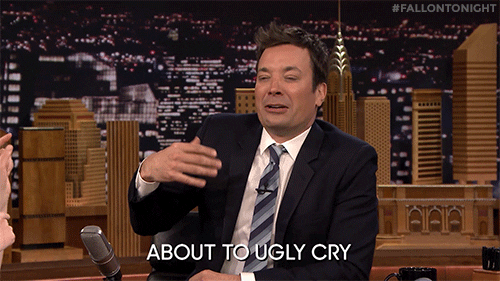
Whatever your hope may be, marketing is an important path to venture on (especially because traditional publishers are rejecting diverse books in favor of ones that are already famous + the whole sub-par machine thing they seem obsessed with.)
And thus, my childhood marketing obsession will hopefully be of use to you. This is all for free (unless you want to spend money) and you don't need to figure out social media platforms (unless you want to, and this guide works if you decide to take that route too.)
Step One: Characters
Marketing spheres will define these fictious people as 'avatars' or 'the target audience'. You could also call them characters. Because that's what they are: fictional people.
For this step, you shall create characters that would love your story.
And here's some great news: You've already done this.
Perhaps you wrote your story to comfort a prior version of yourself. Perhaps each character in your story holds an aspect of your personality. Perhaps you were ridiculously self-indulgent and made the story you would've loved to read. These are all possible characters you can reuse for marketing.
Write down 2-4 quick archetypes for these characters. You'll chose an aspect of your story (characters, themes, or the younger-self that you wrote it for) and write a thumbnail sketch. (Main issue, fears, wants, personality traits if they relate to the main issue.)
I'll do it for my story (the Land of the Fallen Fairies) down below:
Anuli-like (my MC): Overthinking and aloof. Wants a happy ending but thinks their current personality/character isn't good enough for one. The present stales in comparison to the past/the childhood they lost. The 'gifted theater kids'.
Kamari-like (side character): Postpones happiness in favor of creating a perfect schedule/getting accomplishments. Heavy masking. Creative but doesn't create anymore. Promises themself they'll enjoy themselves later, when they've earned it. Workaholics.
My younger self: Wanting a fantasy escapism to embody the traits they wish they had in real life. Dissatisfied and worried about reality. Perfectionists.
Self-indulgent: People who love plants and forests and fantasy worlds far away from reality/humanity.
Great! Now it's time to find these characters.

Step Two: Setting.
(Let's assume you're using the internet for your marketing. But a similar method works for real life too.)
Where do the characters live?
In order to figure that out, we need to discover the characters' interests, what they watch to solve their problems, and who they find #relatable.
(You can do this for each character or for all the characters at once.)
For example:
Anuli-like -
interests: Stories. Analysis videos. Fantasy escapism. Things that remind them of their childhood. (so nature, warmth, comfort, play, imagination and the times they would actually enjoy learning.)
Places to look: Nature quotes, ambience videos, children's shows and fairytales (comfort shows). Fandom culture - fanfic video essays, fan art.
Solving problems (the problem being wanting a 'happy ending' but feeling that their personality/lifestyle/characteristics aren't right for one): Mindfulness things. Self-healing. Quotes and meditations and candles galore. Slow living. Nature vlogs. Self care. All that 'live in the moment' culture.
Places to look: Slow living. Nature vlogs. The 'softer self-help' (spirituality stuff. Magic/ overnight answers). Witchcraft. 'aesthetic nature' places. Guided meditations.
#relatable: Burnt out gifted kids. People who think so much that their life passes them by. Storytellers and creative who create to make sense of the world. People who like dark, gory things in spite of who they want to be. People who don't like reality.
Places to look: Those 'learn better and remember everything' places. (The 'burnt-out gifted kid' recovery places.) Stop overthinking spots. Those quotes on Pinterest from poetic people who think too much /aff. Storyteller places. Dark academia. Classical music. One off quotes/ poetry.
Okie dokie. Once you have this, find channels, social media accounts, blogs, songs, books, etc. that fit with the categories you wrote down. (They should appeal to the characters) You can search up some of the terms you listed into searches and see who pops up. Bonus points if you find people that overlap with multiple sections.
I know I didn't include booktube or booktok in here. You can if you want too. But those can be a bit... 'consume these 500 books'. You also want to find other places where people who would like you story live, even if they don't follow booktube or booktok.
Congrats! Now you know where your characters live!
Step Three: the scary part

Take everyone you found on your search for the settings and write them down a list. Make sure you get an email/contact info. (they usually list them somewhere under 'for business inquires') Also feel free to watch their content and get to know what attributes these settings have.
And now... we talk to them. about our stories. You can do it. I believe in you.
This called 'pitching your product' in marketing spheres. But you can be informal about it.
I know it can be difficult to talk about your work, so here's a tone to have:
'I made this thing I like and I think you'll like it too'.
What you'll do is send an email (or dm) that goes like this (inspired by Creative Hive on youtube):
Hi [name],
[Genuine compliment]
[Quick sentence or two about your story. Include the themes and who it appeals to. If you have a logline/sentence summary, include that. But I find that the underlying themes and 'who's it's for' is more engaging.
For my story, I might say something like.
I've written a story you might enjoy, since you like [interest]. It's called the Land of the Fallen Fairies. It's a nature-themed commentary on the pursuit of happiness and fixing yourself to deserve that happiness, told by an overthinking, unreliable, houseplant narrator. It was supposed to comfort me when I got frustrated with myself and my happiness chasing, and I hope it can comfort others too.
(That's probably a bit long and I can trim it down a bit.)
You can phrase it like a gift if you want too.]
[Call to action.
'If you like it, I'd appreciate a mention on your [platform].
I know this part may be difficult to mention (imposter syndrome is not fun.) But I promise that if they do like it, they'll be happy to mention it.]
If they don't respond within... four-ish days? (A week at most). then you can include a follow up. For this you can include a template with info about your story. This way it's easy for them to talk about your story.
The template:
title
genre
blurb
Author
where to find the book
Bonus points if you have an additional, physical thing to send them.
Congrats! Now do this pitching process a few times until you've covered most of your bases. (Pitch to as many people as you can. It will get more comfortable as you do it. Play your favorite song and don't let yourself think too hard about it.)
----------
The benefits of this process are that you find people that are already interested in the themes and vibes of your story (in comparison to to ads, which get shoved in everyone's faces.). Someone your audience already trusts will talk about it, which means you don't need to do all this trial and error to find your audience and make content for them.
It's basically a bunch of people talking about something they like!
AND you diversify your audience across niches, but with an underlying theme/interests. Booktok/booktube must appeal to everyone, so it's a hit or miss for recommendations. (Unless there is someone that specifically does one genre/type of story.)
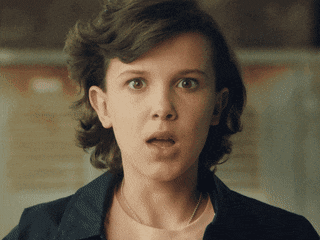
From here you can do fun little things to build up hype and make the book launch feel like this fun event. (I love it when that happens so here's my thoughts about trying to create an event with your story... although that may require another post entirely.)
preorder goals
charity goals
Arg's and puzzles
fund with side plushies and trinkets
Book blog tour
book boxes
as many memes as you can make
rewards (like bookmarks or posters or smth) that people can get for supporting
Talk about the process of creating your story. I know this one channel called 'Dead Sound' that creates 'making of' videos for his short films and they are some of the best videos on youtube.
Okay dear storyteller! Now go forth and share your story with the world!
Additional resources:
Creative Hive <-- a youtube channel that goes through the pitching process.
This video is also very good <-- Haven't watched the rest of the channel but I assume it's also good.
One of the best marketing channels on the internet (the videos are actually entertianing to watch.
Seth Goldin <-- I read his book and took the parts I liked and modified for storytelling marketing.
Dead Sound <-- propaganda to watch the short film series he has (he did the whole 2-d 3-d style wayyyy before spiderverse did... and he's one person making these. One person. It's amazing.
Glitch <--- If someone can figure out how The Amazing Digital Circus was marketed then I will pay you money. It seems to be a lot of memes and funny things.
#writers of tumblr#writerscommunity#writing advice#writing tips#writer stuff#on writing#writeblr#writing community#writer#storytelling tips#fiction#writing#filmmaking#creative writing#writers on tumblr#writers and poets#marketing strategy#pitching#writing resources#resources#useful#for reference#useful stuff#the writeblr library#please do well post#I've spent so much time on this
375 notes
·
View notes
Text
??????? abed explain yourself

#forgot how gay s4 is#what are you calling him your partner for 🤨#btw everyone else's card said lab partner#so#trobed#community nbc#advanced documentary filmmaking#styx posts
565 notes
·
View notes
Text
I don’t care what the plot of the community movie is as long as it starts with a shot of Troy and Abed cuddled together in bed and sleepily singing “Troy and Abed in the morning” as they wake up
#community#Trobed#Troy Barnes#abed nadir#community movie#no this won’t happen but I enjoy being delusional#I woke up this New Year’s Day with this image in my brain so I had to inflict it upon the rest of u#it’s a giant bed btw cause they live in a mansion cause Troy successfully completed pierces challenge and won his inheritance#and abed is a successful filmmaker#and they live in LA now#Troy does ac repair or car repair for fun#he doesn’t need to but he needs to do something with his time#and he mainly focuses on apprenticeships#and teaching those skills to high schoolers who can’t afford to go to college#can u tell I’m very attached to the mechanic Troy idea#he has a GIFT and it bothers me that it was completely set aside#he doesn’t necessarily need to use it but I like the idea of him starting his own school#except this time it’s not a cult#and it’s to show people that u can have a successful career WITHOUT college#the trades are valuable.#ok I’m done#actually no I’m not#he comes home every day and gushes about his students#‘abed you won’t BELIEVE how quickly Tony can diagnose and replace x!’#can u tell I know very little about cars#and then abed makes a film about Troy and his kids and they get a SHIT TON of money and all of it goes to scholarships and expanding#the school#yes Troy has money already but also running a repair shop and training kids for free is Expensive#and they both live happily ever after.#NOW I’m done
494 notes
·
View notes
Text

Spike Lee, January 2022, by Satchel Lee.
#black excellence#spike lee#style#satchel lee#black women#2020s#black tumblr#fashion#celebrities#filmmaking#community#culture#black history#black men#movies#lifestyle#blm#glasses#cinema#film#cinematography#director#movie#da five bloods#🎨#wake up#vote
256 notes
·
View notes
Text




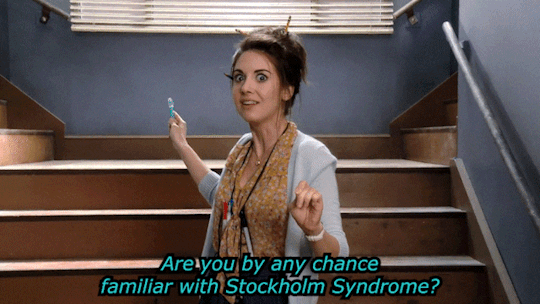
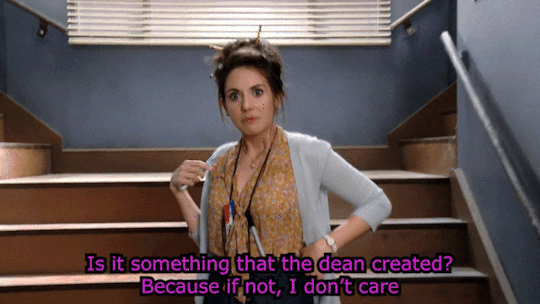
Community gifs - 238/?
3x08, Documentary Filmmaking: Redux
#nbc community#annie edison#abed nadir#community#community nbc#community 3x08#3x08#documentary filmmaking redux#communitygifs#communityedit#alison brie#danny pudi
365 notes
·
View notes
Text
Woah! A film about the uncertainty and internal struggle of figuring out you’re queer? For free! Unscripted and all!
Hope you all enjoy!!!
youtube
#filmmaking#film#self promo#student film#youtube#short film#queer#lgbtq#lgbtqia#lgbtq community#lgbt pride#lgbtqiia+#lgbtqplus#transgender#trans#trans pride#butterfly#experimental#genderfluid#genderqueer
21 notes
·
View notes
Text
youtube
FERNHERRLICHKEIT
"Two students get closer to eachother in a time, that does not intend this. Will the one be able to leave the ruins of his past behind and follow the call of the other?"
[Support us on StartNext]:
https://www.startnext.com/fernherrlichkeit-film
Our short film Fernherrlichkeit tells the story of the student Richard, who, under the pressure of his family past, is clinging to it, but is shown a different perspective by his fellow student Anton. Fernherrlichkeit highlights the tension between homosexual love and the societal constraints of a still-current past - a conflict that has been discussed many times before, but here from its own aesthetic perspective.
This is a supra-regional short film project for which we have selected the most beautiful and most suitable locations from all over Germany. Just like the filming locations, the crew is made up of filmmakers from Hamburg, Berlin, Leipzig, Düsseldorf, Köln, among others. However, these geographic distances also pose the greatest technical production challenge for us:
How do we get everyone involved to the right location at the right time? – Above all, a financial question.
In order to be able to implement Fernherrlichkeit with our artistic and production-technical demands, financial means are of course necessary. A significant part of this budget consists of equity.
For the other part of the budget, we rely on you: the crowd.
With your support, it will be possible to reimburse all participants and crew members for their travel expenses. That would cover the biggest cost item for us. So if you would like to see "Fernherrlichkeit" on a screen in the future, we would be happy if you support us! Thanks very much!
#dark academia#short flim#startnext#filmmaking#crowdfunding#fernherrlichkeit#gay love#gay film#queer community#queer artwork#germany#goodies#20s#university#aestheitcs#aesthetic#Youtube#gay#lgbtq#lgbt representation#art
62 notes
·
View notes
Text
Poor Things Movie Review
Brought back to life by an unorthodox scientist, a young woman runs off with a lawyer on a whirlwind adventure across the continents. Free from the prejudices of her times, she grows steadfast in her purpose to stand for equality and liberation.
Since the beginning of his career, Yorgos Lanthimos has been pushing the boundaries of filmmaking. He is unafraid to handle difficult themes and complicated subjects with his strange aesthetic. So when he decides to adapt a whimsical Victorian science fiction novel that explores the complexities of what it means to be a woman, I would be down immediately. However, I wish I didn’t get my hopes so high for Poor Things as I am left deeply conflicted. On one hand, it is a technological achievement for Lanthimos. The world-building and the aesthetics of the film are beautiful. But on the other is an alarming and problematic story that is framed as female empowerment.
A mad scientist (Willem Dafoe) discovers a dead pregnant woman (Emma Stone) floating in the River Thames. Using his Frankenstein methods, he revives the woman by replacing her brain with that of her unborn child. As the weeks and months go by, her speech begins to become more coherent and her motor skills more refined. When she discovers masturbation, her “father” drafts up a contract for her to be married to his assistant (Ramy Youssef). However, before the marriage, she runs off with the lawyer (Mark Ruffalo) where she discovers her sexuality and the reality of human nature. From this synopsis, it sounds like a modern retelling of Mary Shelly’s “Frankenstein”. However, Poor Things is more of a horror story than Frankenstein will ever be.
Throughout Poor Things, we witness Bella (Emma Stone), be groomed, sexually assaulted, and r*pe by men. However, instead of framing these atrocities for what they are, it is framed as female empowerment as she experiences her sexual awakening. As previously stated, Bella has the brain of a literal child, thus causing her to be emotionally immature and mentally handicapped, despite having the body of a fully grown woman. Many men immediately see her mental capacity and take full advantage of her. For example, when Duncan (Mark Ruffalo) arrives to draft up the marriage contract, he immediately notices that Bella is mentally handicapped, so he sexually assaults her. However, instead of framing it as a crime, Bella enjoys it and furthering her sexual awakening. Then the next thing you know, she runs away with her groomer, despite the fact she can barely put together a full sentence. However, her grooming does not end there. During a low point, she is manipulated by a Madam of a brothel, to sell herself to make some coin. But instead of framing this situation as a cautionary tale of selling yourself for money, it's framed as female empowerment as she is owning her sexuality. Despite the Madam being fully aware that she is mentally handicapped.
I don’t know about you, but if this does not make your skin crawl, I don’t know what I could say to you. This is a disgusting portrayal of feminism, as it frames these disgusting scenes of abuse and r*pe as sexual exploration. Poor Things is a r*pe fantasy of what men think female empowerment is, as it sexually exploits and sensationalizes Bella Baxter’s journey. From the uncomfortable close-up of Emma Stone experiencing orgasmic pleasure, to the sheer amount of fully nude shots Stone had compared to her male counterparts, is disgusting. I am fine with sex in film, but here it is so uncomfortable and unnecessary. Bella is reduced to nothing more than an experiment and a sex toy for men, as the film primarily focuses on her physicality and her relationships with men rather than showing her autonomy or resilience to sexism. Furthermore, by the end of the film, you wonder what it is saying. What I got was that the only way a woman can be enlightened, empowered, and strong is by having a lot of sex with other people. No offense but that comes across as a man's version of feminism.
Now within this r*pe fantasy, there are moments in Poor Things where it becomes classically feminist. While Bella is traveling on a boat to Alexandria she meets Martha (Hanna Schygulla) and Harry (Jerrod Carmichael). Unlike the rest of the film, Martha challenges Victorian-era norms as she exhibits a strong sense of independence and intelligence, unafraid to assert herself in a male-dominated society. While Harry acknowledges her intelligent wit and autonomy. Not once do they treat Bella as a sexual object. Together they teach Bella philosophy, literature, and human nature. Thus empowering her mind and spirit as she discovers there are more pleasures to life than sex. She learns of the mutual respect and admiration they have for one another, thus she begins to challenge her views of Victorian gender roles. Furthermore, when Bella is working in the brothel, she develops a close relationship with her co-workers highlighting the bonds between women. It’s a perfect highlight of feminine strength. However, these scenes are few and far in-between. I wish Poor Things would have explored these areas of feminism, as it shows that women are more than sexual objects. But sadly today feminism believes the only way women can be empowered is by having a lot of sex or by turning them into a man (it would have been funny if the baby was a boy).
To further add to the positives, I mostly enjoyed the performances, but I don’t think they are as groundbreaking as many people consider them to be. Emma Stone gives a very interesting performance. She is a very charismatic and versatile actor, which clearly shows in her performance when studying her body language and mannerisms But when studying her performance more, it does come across as a stereotype of someone who is mentally disabled. Her character is one-dimensional and her struggles and resilience seem to be non-existent in her performance. Whether this was writing, direction, acting, or all of the above, I expected more out of her than this stereotypical portrayal of someone who is mentally handicapped. Mark Ruffalo gives the standout performance in Poor Things. He is hysterical as his pathetic manchild of a character. However, an element missing from his performance that would have been a great extra layer would have been to frame his character for the sexual predatory that he is. Willem Dafoe is good here, but nothing really special. He is wasted as his character feels one note not only in writing but in theme. He never confronts his unethical Frankenstein methods, which is a massive waste of an opportunity. I greatly enjoyed the presents from Hanna Schygulla and Jerrod Carmichael, and I wished they were in the film more.
Furthermore, as with all Yorgos Lanthimos films, you know they will be technically spectacular. The production and costume design will fully immerse you into this Steampunk fantasy. The costumes are intricate and delicately textured, which feels both old and futuristic. The production design feels both old and futuristic with the flying rail cars to the Victorian interiors. The cinematography is beautiful with pastel-like colors that fill every frame. Furthermore, the score is unique and ties perfectly into Lanthimos’s aesthetics.
Yorgos Lanthimos’s Poor Things presents a troubling array of issues that undermine its potential. If Bella had been a fully grown adult (both mentally and physically) who had just been sheltered her whole life, with predatory characters being framed as predatory characters, and less of the male gaze, I most likely would have enjoyed Poor Things. However, because Bella is a child who is being sexually exploited, whatever themes Poor Things tries to tell are immediately tainted by the film's predatory nature. It lacks the nuances of feminism and female empowerment, as it misunderstands what it is to be a woman. It is a shallow and distorted depiction of women’s agency and struggles told through the eyes of a man.
My Rating: C-
#film#cinema#movies#movie#filmmaking#filmmaker#moviemaking#moviemaker#cinephile#cinematography#film community#film is not dead#film review#movie review#film critic#movie critic#poor things#emma stone#yorgos lanthimos#margaret qualley#oscars#willem dafoe#mark ruffalo
25 notes
·
View notes
Photo

How To Make A $50,000 Movie - J. Horton via FilmCourage.com.

#film#filmmaking#micro-budget film#indie filmmaking#independent film#indie artists#filmmaking community#filmmaking 101#filmmakers on tumblr#artists on tumblr#making a movie#Tumblr film#Tumblr movies#cinema
1 note
·
View note
Text
It's Okay Your Writing Isn't Like So-and-So's
Here's five reasons why:
1. Published work has teams of people behind it
Traditional (and even lots of indie) published work has not just the writer’s drafts behind it, but drafts that have been through professional editors, agents, beta readers, etc. etc. etc. They say writing is a solitary career, but there are tons of people behind every published work to make it better.
2. Every style is different and valid
Yours might not look exactly like other people’s work. That’s because everyone has their own voice in writing, and that’s what makes every writer individual, and every story worth reading.
3. You’re the only person who can write your story
Style, your ideas, your characters, and every other detail in your story is built off your all your little life experiences and interests. It will look different for every person even if you all tried writing the same idea.
4. Everyone has different skills and experience levels
You may be really great at dialogue, while someone else may be really good at action. Everyone has different skills and areas they’re better or worse at. It’s okay.
5. People will love it anyway
You’ve probably heard of the cake saying? Someone else makes a beautiful cake, you make a just okay cake, but the person that comes along to eat them is just excited there’s two cakes.
People just want more content. They will read the same content over and over again. They will love it anyway.
Anyone have anything to add?
#writing#creative writing#writers#screenwriting#writing community#writing inspiration#filmmaking#books#film#writing advice#it's okay your writing isn't like so-and-sos
1K notes
·
View notes
Text
In my latest newsletter I share some thoughts on the role of food and meal sharing in books, movies, and games: https://andrea-blythe.beehiiv.com/p/2024-02-lets-share-a-meal
#books#writing#writing community#storytelling#games industry#game writing#games writing#narrative#narrative design#filmmaking
16 notes
·
View notes
Text
Follow for more book stuff
Hey there, writers and readers! Since there are a few more of you here on the blog, I thought I'd do a quick reintroduction. I'm Soulwriter, and I've been scribbling stories since I was nine. I'm all about sharing tips on writing, writing prompts, and chatting about anything book-related. If you have questions about writing, feel free to ask, and I'll share what's worked best for me.
#creative writing#writing#writers block#writing advice#writblr#writers on tumblr#writeblr#writing community#words#writing tips#writers#ao3#wattapd#puplishing#screenwriting#filmmaking#bookworm#tipss#promts#writing promts#writing inspiration#writing inspo#tropes
28 notes
·
View notes
Text
forgot how good Advanced Documentary Filmmaking is !! Jeff being so excited to be lawyer-y again, Annie getting really into being a detective, and Troy also getting really into it but in the opposite way, Britta's AWFUL filming... my favorite part though has GOT to be Troy's constant thumbs up and little grins at the camera (Abed) <3333
#Advanced Documentary Filmmaking#nbc community#abed nadir#troy barnes#annie edison#trobed#jeff winger#britta perry
74 notes
·
View notes
Text
I love making fake casting calls for my fake movies
#it’s fun to pretend#writeblr#screenwriting#screenwriters of tumblr#writers on tumblr#cinema#movies#writer#queer writers#lgbtq#lesbian#asexual#letterboxd#txt#text post#filmmaking#filmmaker#film student#uni studyblr#writing community#detectives
9 notes
·
View notes